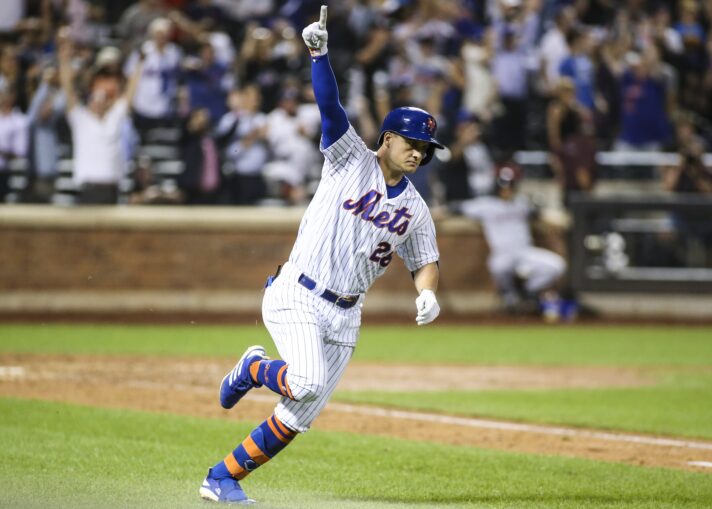
On Saturday, New York Mets slugger Yoenis Cespedes declared himself – in all likelihood – ready to go on Re-Opening Day, 12 days away at Citi Field versus the Braves.
Just typing that was exhilarating.
Anyway, Cespedes, 34, is presumably penciled into the newly-adopted designated hitter spot, which is a plus considering how he’s looked so far in Summer Camp.
When he does take the field – appearances will likely be few and far between – Cespedes is sure to only see time in left field. If he can field his position and still has that cannon for a right arm, great. That probably shouldn’t be expected.
Now that Cespedes is all but healthy, manager Luis Rojas has another option in his battle to create opportunities for all the weapons on this roster. That’s never a bad problem to have.
So what about J.D. Davis? Davis, 27, was destined to roam on defense this season in any scenario, but most of his time was expected to be spent in left field.
Then, when the DH was adopted in the National League for the COVID-shortened season, it added to the intrigue and versatility of this Mets roster, with Davis right in the middle of that conversation.
In his first full MLB season, Davis – acquired from Houston for three prospects in January 2019, one of Mets GM Brodie Van Wagenen’s first additions at the helm of the club – made quite the impression, endearing himself to the Citi Field faithful with his potent bat and affable personality.
Over 453 plate appearances for New York last season, Davis hit .307/.369/.527 with 22 homers, 22 doubles, and 65 RBIs, seemingly flipping a switch after his two-homer game versus Patrick Corbin and the Nationals on April 6.
Among NL hitters with over 450 plate appearances in 2019, Davis’ 136 wRC+ and .373 wOBA ranked 10th and 17th, respectively. That’s wholly encouraging. And the Elk Grove, California product’s advanced metrics (and MLB ranks, per Statcast) are even more uplifting.
- 91.4 MPH average exit velocity, 90th percentile
- 47.7 percent hard-hit rate, 91st percentile
- .308 expected batting average (xBA), 97th percentile
- .383 expected weighted on-base average (xwOBA), 92nd percentile
- .548 expected slugging percentage (xSLG), 91st percentile
- .462 expected weighted on-base average on contact made (mmm, xwOBACON), 92nd percentile
Davis has been able to consistently find success versus fastballs (.323 batting average) and breaking pitches (.313 BA). And though he’s had some trouble with off-speed pitches (.234 BA), his 20.7 percent whiff rate on those offerings ain’t half bad. See the ball, hit the ball.
Clearly, Davis’ bat isn’t a cause for concern. His glove isn’t sterling by any means, but – according to Baseball Savant – it’s not so bad, and should afford him consistent opportunities to see action on defense.
His escapades in left field last season were clearly a work in progress, as Davis accumulated -7 outs above average with a 78 percent success rate on an 84 percent estimated success rate (he should have made six percent more of the plays he didn’t make).
At third base, however, Davis contributed playable defense. He racked up one out above average and had an 85 percent:83 percent success-to-estimated success ratio. League average defensive value will get the job done with the offensive upside Davis brings.
With guys like Cespedes, Melky Cabrera, and Jed Lowrie – none were assured to be on the Mets’ active roster this season until recently – all at Rojas’ disposal, J.D. Davis will need to continue mashing to stay at the top of the pecking order. Not the tallest of orders.
But if he can continue progressing on the other side of the chalk, Davis could be a catalyst for this team. That’s enticing.















